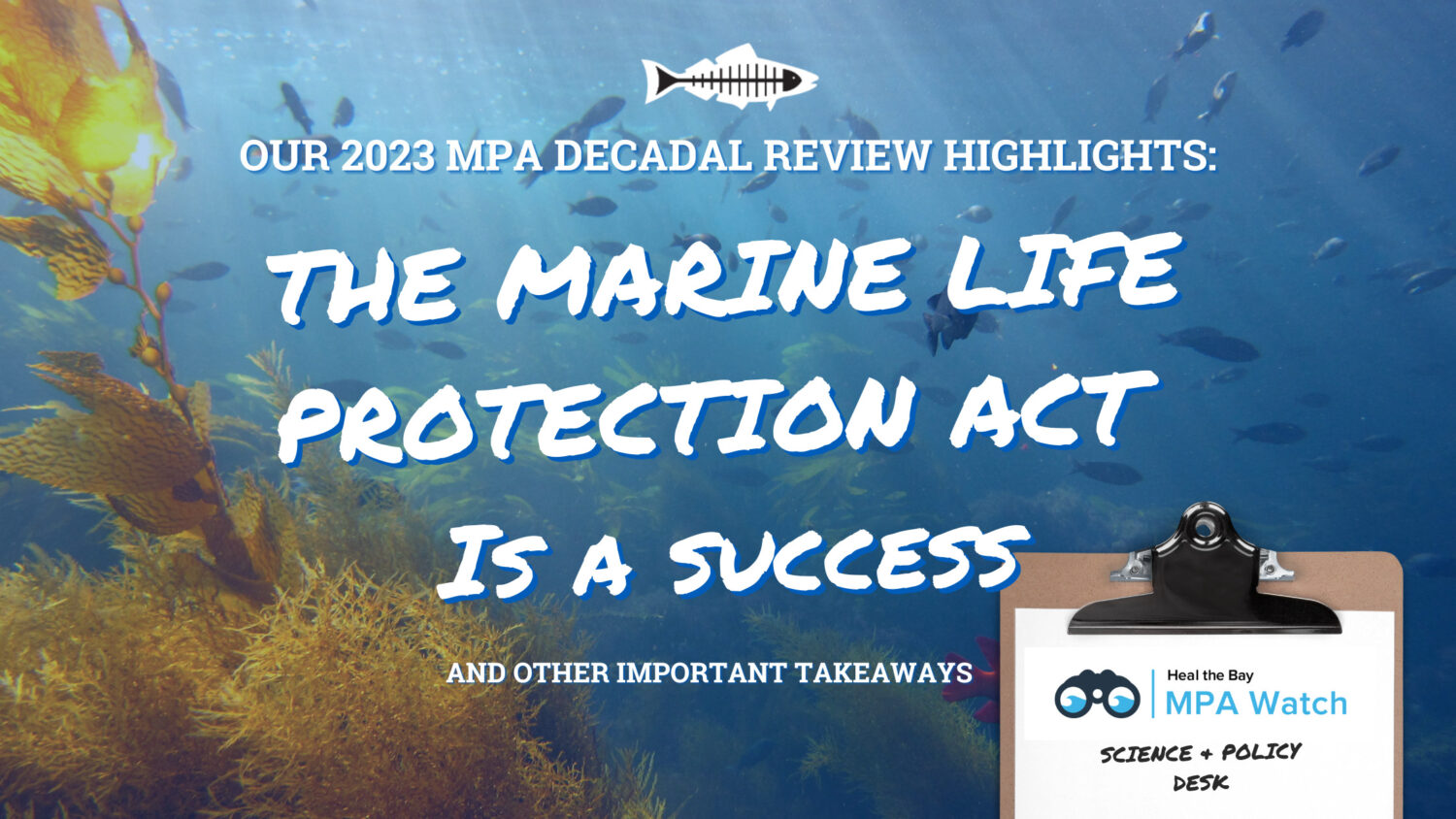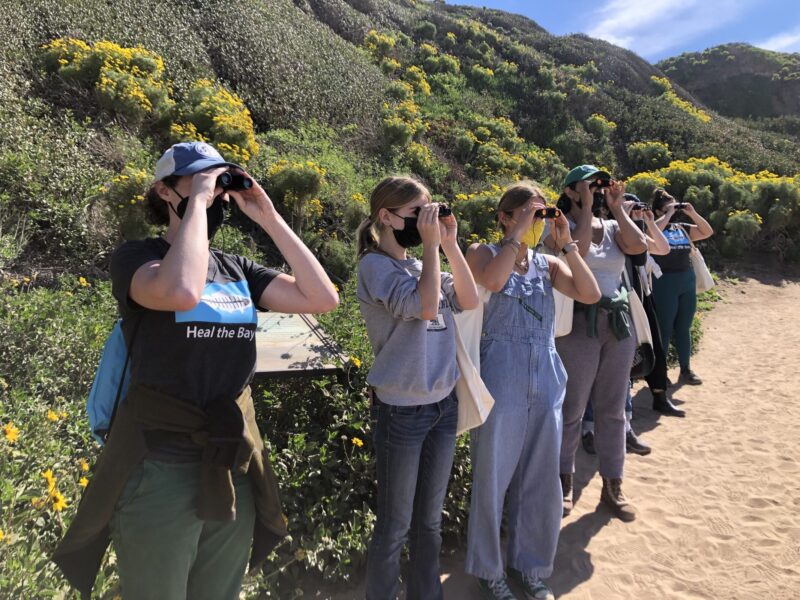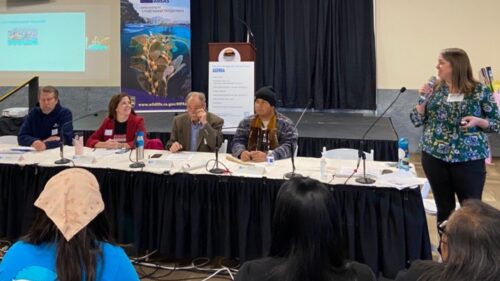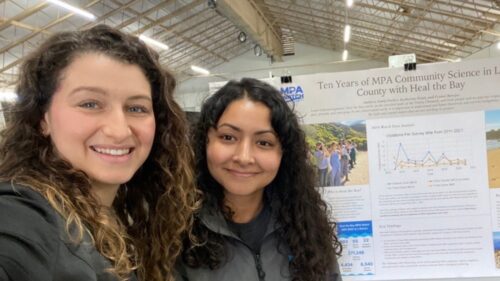The Marine Life Protection Act is A Success: Takeaways from the 2023 MPA Decadal Review

After a decade of volunteer surveys and scientific review, we now know that Marine Protected Areas are working, but inclusivity and climate resiliency must be considered to ensure the full benefits of these precious sanctuaries for all.
Nearly 24 years ago, the state of California passed the Marine Life Protection Act (MLPA), forever changing the course of marine conservation in our coastal state. Following an arduous community centered process, California established a globally recognized network of 124 marine protected areas, or MPAs. These MPAs, which run up and down our nearly 1,000-mile coastline in varying degrees of protection, limit certain consumptive human behaviors like fishing and collecting tidepool animals in an effort to protect and restore biodiversity and coastal resources.

(Above) Heal the Bay Marine Protected Area Watch Volunteers completing MPA Survey Training at Point Dume, California.
After California instituted these Marine Protected Areas, there was an immediate need to establish a successful management program and a system to refine or adapt MPA Network over time based on both ecosystem and human data. The state built an adaptive management program, requiring a review of our MPA network every ten years.
 Now, a decade after the final MPA was put into place, the very first California MPA Decadal Management Review (DMR) is underway. Led by the California Department of Fish and Wildlife (CDFW) and California Fish and Game Commission (FGC), this review process looks at the four managing pillars of MPAs: research and monitoring, education and outreach, policy and permitting, and enforcement and compliance. For more info on the DMR process, check out our blog from last year.
Now, a decade after the final MPA was put into place, the very first California MPA Decadal Management Review (DMR) is underway. Led by the California Department of Fish and Wildlife (CDFW) and California Fish and Game Commission (FGC), this review process looks at the four managing pillars of MPAs: research and monitoring, education and outreach, policy and permitting, and enforcement and compliance. For more info on the DMR process, check out our blog from last year.
How is this highly anticipated Decadal Management Review going? In mid-March, Heal the Bay’s MPA team traveled to Monterey along with activists, researchers, Tribal members, Tribal elders, enforcement officers, anglers, and community members to attend three days of MPA management review. We heard from MPA managers, Fish and Game Commissioners, Indigenous leaders, scientists, and many others through a series of meetings, panels, and open forums.
Here are our top four take-aways from California’s FIRST MPA Decadal Review thus far:
- California’s MPAs are working.
Long-term monitoring shows that, at least for highly fished species in certain areas, MPAs are supporting larger and more abundant fish compared to reference sites that are not protected. Further, modeling across the central coast showed connectivity and spillover, indicating that MPAs are behaving as designed (i.e., as a network) and that benefits are seen even outside and across MPAs. While there is still much more research to be done, these initial results are incredibly promising, and we expect these positive outcomes to increase with time. - Indigenous people must be elevated to MPA leadership positions.
The Indigenous nations of our coastline have been and continue to be the original stewards of this land. They have cared for coastal ecosystems since time immemorial and their knowledge and perspectives are necessary components in managing and evaluating our MPAs. Unfortunately, Indigenous nations and people were largely excluded from the original MPA designation process. Heal the Bay supports the requests made by Tribal members for expanded access to the coastline and to be elevated to positions of leadership within the MPA management system. Access to the coast and all it has to offer must be expanded for all Indigenous people. - Future MPA management MUST prioritize climate resiliency.
We are in the midst of unprecedented climate disruption, not only on land but in our marine and coastal ecosystems. California’s network of MPAs presents a unique opportunity to evaluate the climate resiliency potential of MPAs against climate stressors like increased temperature, increased acidity, rising sea levels, changing tides and storm surges, increased erosion, and decreased oxygen. Heal the Bay would like to see the future of MPA monitoring include climate resilience metrics. - MPA monitoring and research needs to broaden in scope.
While the level of MPA research that has been conducted over the past 10 years is nothing short of impressive, there are areas where the state can do so much more. For example, long-term monitoring of MPAs should utilize innovative research tools like environmental DNA (eDNA) to measure biodiversity trends in space and time. Analysis of biological data must be expanded to compare the different types of MPAs in the network to assess how effective different levels of protection are. Finally, there are opportunities and a need to better analyze compliance, or how well people are following MPA regulations, to give us the full picture of MPA effectiveness. Heal the Bay is advocating for these expanded monitoring priorities to improve our understanding and management of MPAs overall.
(Above) Emily Parker, Coastal and Marine Scientist, and Crystal Barajas, Senior Community Science & Outreach Coordinator, represented Heal the Bay at the March 2023 Decadal Management Review Forum in Monterey, California.
At the meetings in Monterey, Heal the Bay advocated for the inclusion of Indigenous leadership, the prioritization of climate resiliency, and the broadening of MPA research in an oral testimony to the FGC Marine Resources Committee and submitted these suggestions via a written comment letter. We will continue this advocacy in future FGC meetings and as we meet with agencies, collaborate with partners and stakeholders, and engage the public.
California’s network of MPAs is still young. It will take more time and improved protection and management to see the maximum benefit for biodiversity. To see those benefits, the MPA network must remain intact and protections must, at the very least, remain as strong as they currently are. This first glimpse of our MPA,s success is incredibly exciting, and we can’t wait to see what 10 more years of MPAs bring.
Interested in diving headfirst into the Decadal Management Review? Read the official report here.
Looking to get involved in MPA research? Join Heal the Bay’s MPA Watch team to help us collect valuable human activity data in and around MPAs!
ACTION LINKS
OFFICIAL DECADAL MANAGEMENT REVIEW





